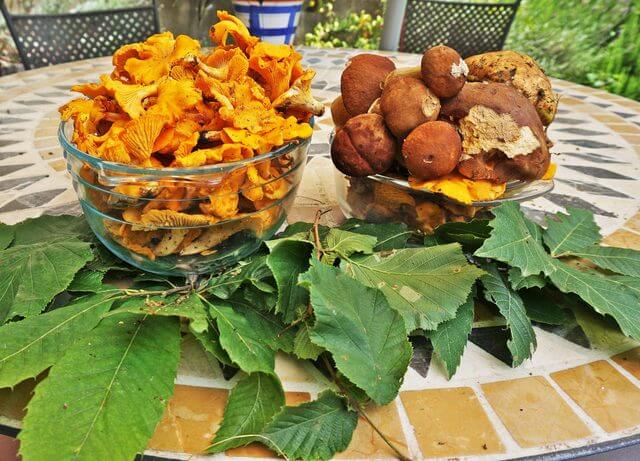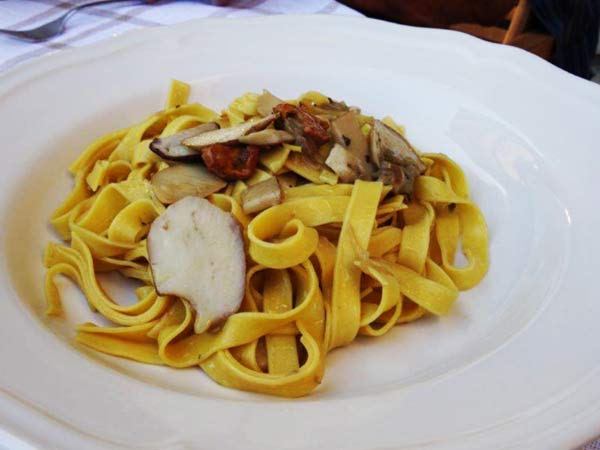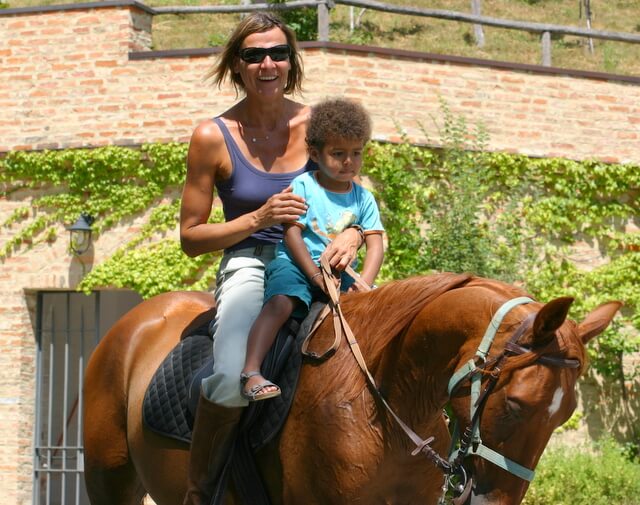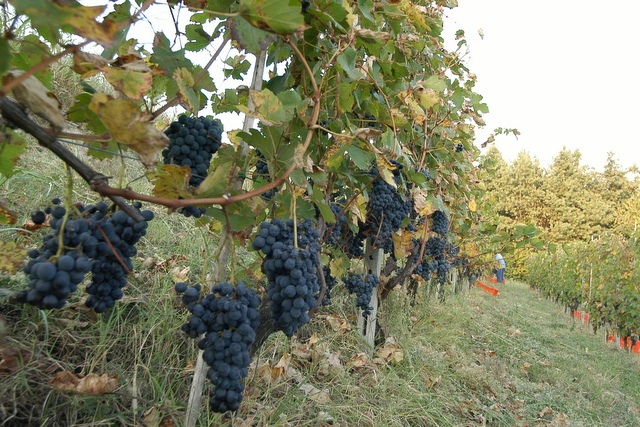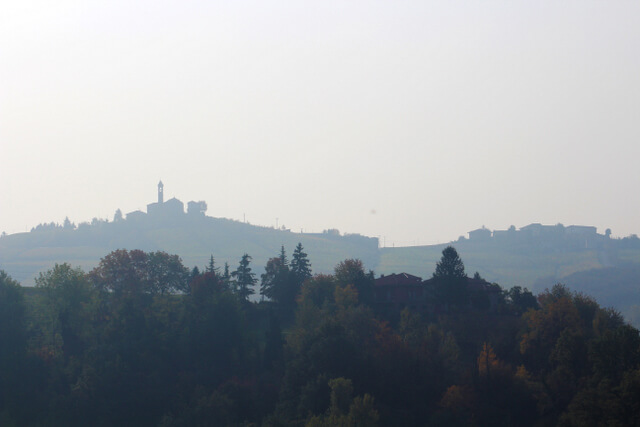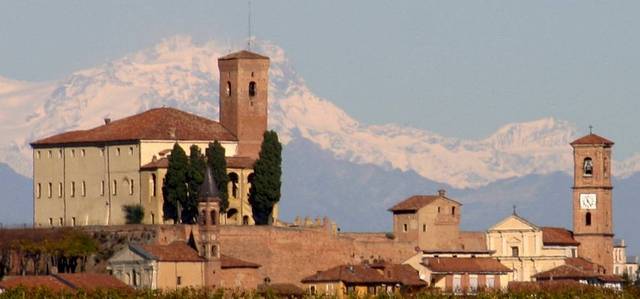Agnolotti
The Agnolotti (pronounced anneolottee) are a tipical Piedmontese starter. (Ubersetzen von Sabine Christodoulou)
They are made from thin sheets of dough filled with minced roast of beef, minced roast of pork, and spinach all mixed together (some times also roast of rabbit). When prepared elsewhere than in Piedmont, agnolotti are called “ravioli”: Ravioli may be filled with anything edible, such as ricotta and cheese.
The Agnolotti – 6 to 8 servings
Difficulty: medium
Time to prepare: 1 1/2 hour, plus the time to roast and mince the meat.
Ingredients
200 gr. of roast of Pork
200 gr. of roast of Veal (Beef will do but Veal is what the poeiginal recipe calls for)
300 gr of spinach
50 gr of Parmigiano Reggiano
500 gr. of flour (type 00 – the same flour you’d use to make your own bread)
170 ml of warm water
3 eggs
1 Teaspoon of Extra Virgin Olive Oil
2 Teaspoons of Soffritto
2 cloves of Garlic
1 twig of Rosemary
2 Teaspoons of Salt
A Pinch of Pepper
50 gr. of Butter
5/6 leafs of sage
Preparation
For the Dough
Place the flour in a bowl; push the flour from the middle of the bowl to the sides so as to leave a hollow center; add one teaspoon of extra virgin olive oil, sprinkle the flour with two teaspoon of salt, add two eggs, add about half of the water and mix thoroughly with a fork. Add the rest of the water, a little at the time, and keep mixing. Once the flour is mixed, check for consistency: add some water if too dry, add some flour if too liquid. Pour the dough on a wooden board like the one shown, and knead it by pressing it in a forward motion with the heels of your hand. Keep kneading until the dough becomes a uniform paste. If the dough is still too liquid it will tend to stick to the wooden board: in this case add some flour and keep kneading. The dough is ready when it makes a soft round ball which does not stick to the board nor your fingers. When you get enough practice doing this, it will take you no more than 10/15 minutes to prepare the dough.
Now it’s time to prepare the strips of pasta: I use a pasta machine to do this, the one shown on the picture. Cut a piece of dough, spread it a little with your fingers, then pass it through the rolls from thick to thin. I like the pasta very thin, so as to enhance the taste of the filling: so my strips are as thin as the machine allows them to be. Each strip should be as large as the pasta machine and about 40/50 cm long. Cover the strips of pasta with a wet towel, otherwise the dough would dry on you. Now remember this: some recipe will recommend to leave the dough for one hour or more to rest. DON’T DO THIS, especially if you don’t have a pasta machine, and have use a rolling pin instead. If the dough is left to rest it will become chewy and elastic, and it will be that more difficult to spread thin into sheets of past.
For the Filling
I use a cast iron casserole to roast the meat, but you can use anything else you might be more accustomed to. Pour some oil in the casserole, add two teaspoons of soffritto (optional: but I recommend it strongly), add the two pieces of meat , sprinkle some salt and pepper, add two cloves of garlic, one twig of rosemary, cover the casserole, and let cook a low heat for about 45 minutes. Check periodically, and add some white wine as required.
While the meat is roasting, pour the spinach in a sauce pan, add some water but not as much as to cover the veggies, and let them cook for no more than 10 minutes from the time the water is boiling. Let the spinach cool, then squeeze them thoroughly between your hands to eliminate any excess water.
Cut the roasted meat in tiny pieces, as shown, mix the meat with the spinach then grind everything with a meat mincer. Should you not have one of these kitchen wonders, You’ll have to use a kitchen knife o, better, a rocking knife, to do so. Keep in mind that the meat must be minced very finely. Now pour everything in a salad bowl, add the grated Parmigiano Reggiano cheese, and mix. If you have properly squeezed the water out of the spinach, the mix should be dry. Add one egg and mix thoroughly with your hands: the filling must be moist but NOT creamy.
For the Agnolotti
Put one sheet of pasta flat on your wooden board, take a lump of filling in your hand and, using your other hand’s fingers, put dabs of filling, on the sheet of dough, every 5 cm. Then roll the pasta, gently, over the dabs, and, using your fingers, press the two slabs of pasta so that they stick together. Using the edge of your hands, press the dough in between the dabs. Now use a pastry wheel to cut into the agnolotti into individual pieces. Keep in mind that their ideal size is about 3cm by 3 cm square by 1,5 cm thick. When done by hand the agnolotti will all have a somewhat different shape and size: this is very charming and shows how hard you have worked to make them and how dedicated you are in cooking gourmet food. But try to keep them about the same size and volume so that they will cook evenly.
Using a “Ravioli Maker” may make things a little easier but won’t save you time. Sprinkle some flour on the surface, spread a sheet of dough on top and press lightly, fill the cavities with filling, cover the thing with a second sheet of pasta, press with your hand or, better, with a rolling pin, turn the “maker” over, and tap on it to extract the sheet of agnolotti. Separate them individually using pastry weel.
Now sprinkle a wooden plank with corn flour (because it’s powder is thicker than the that of the wheat ) and line the agnolotti on top. If at all possible, let them rest for a fortnight; if not, at least for a few hours.
Serving
Boil the water, then salt (you have put the right amount of salt when the water stops boiling); now pour the agnolotti in: they will be cooked just perfect when they start floating. So scoop them up as they float and pour them in the frying pan where you have melted the butter with a few leaves of sage.
Serve a few agnolotti in the middle of dish as shown, maybe sprinkled with a little bit of grated Parmigiano Reggiano.
Enjoy !



